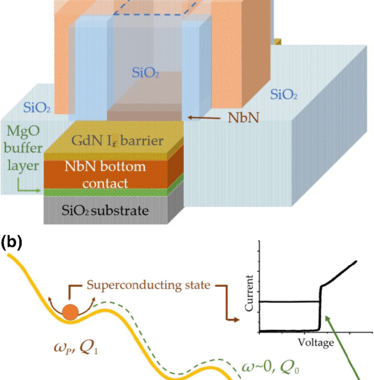
Electrodynamics of Highly Spin-Polarized Tunnel Josephson Junctions
Authors: H.G. Ahmad, R. Caruso, A. Pal, G. Rotoli, G.P. Pepe, M.G. Blamire, F. Tafuri, and D. Massarotti
Phys. Rev. Applied 13, 014017 – Published 10 January 2020
Abstract: The continuous development of superconducting electronics is encouraging several studies on hybrid Josephson junctions (JJs) based on superconductor-ferromagnet-superconductor (SFS) heterostructures, as either spintronic devices or switchable elements in quantum and classical circuits. Recent experimental evidence of macroscopic quantum tunneling and of an incomplete 0-π transition in tunnel-ferromagnetic spin-filter JJs could also enhance the capabilities of SFS JJs as active elements. Here, we provide a self-consistent electrodynamic characterization of NbN/GdN/NbN spin-filter JJs as a function of the barrier thickness, disentangling the high-frequency dissipation effects due to the environment from the intrinsic low-frequency dissipation processes. The fitting of the I–V characteristics at 4.2 K and at 300 mK by using the tunnel-junction-microscopic model allows us to determine the subgap resistance Rsg, the quality factor Q, and the junction capacitance C. These results provide the scaling behavior of the electrodynamic parameters as a function of the barrier thickness, which represents a fundamental step for the feasibility of tunnel-ferromagnetic JJs as active elements in quantum and classical circuits, and are of general interest for tunnel junctions other than conventional SIS JJs.
